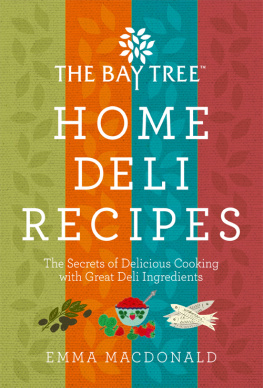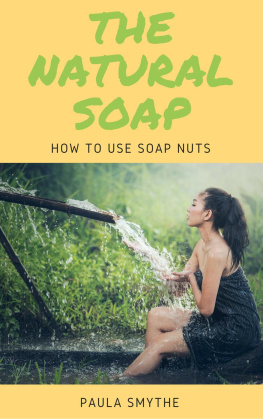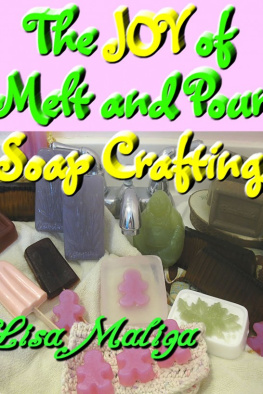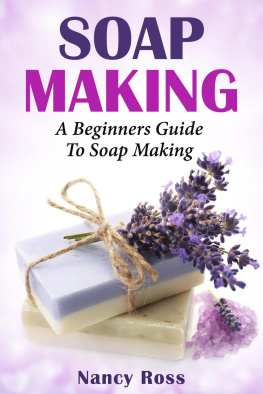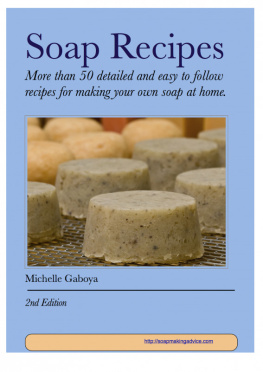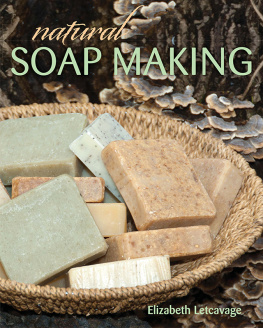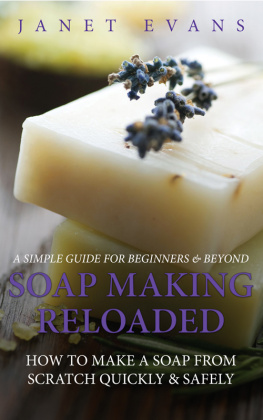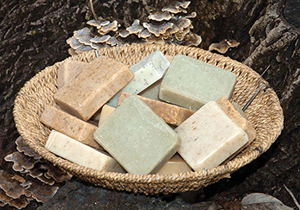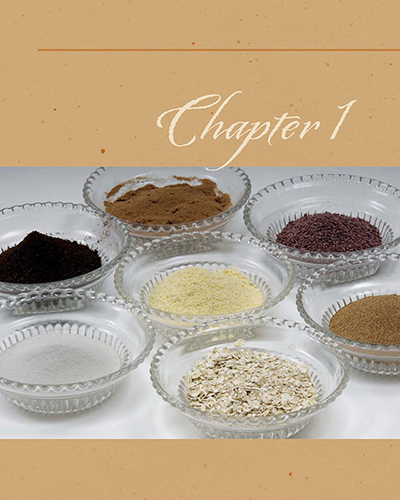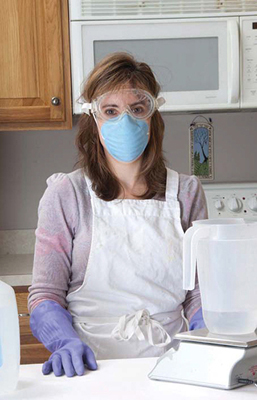I n this era of mass-produced, chemical-laden household goods, homemade soap is a natural alternative that is better for our skin and the environment. The many easily attainable and affordable ingredients you can use transform soap making from drudgery to a pleasant experience that involves a large measure of creative input. Heres hoping that you find the soap making process to be fun and rewarding, and that you will continue on to produce many batches of luxurious, aromatic soaps using your own unique recipes. Happy natural soap making to you in all the days ahead!
Copyright 2013 by Stackpole Books
Published by
STACKPOLE BOOKS
5067 Ritter Road
Mechanicsburg, PA 17055
www.stackpolebooks.com
All rights reserved, including the right to reproduce this book or portions thereof in any form or by any means, electronic or mechanical, including photocopying, recording, or by any information storage and retrieval system, without permission in writing from the publisher. All inquiries should be addressed to Stackpole Books, 5067 Ritter Road, Mechanicsburg PA 17055.
Printed in the United States of America
10 9 8 7 6 5 4 3 2 1
First edition
Cover design by Wendy A. Reynolds
Library of Congress Cataloging-in-Publication Data
Natural soap making / Elizabeth Letcavage, editor ; Melissa Harden, expert consultant ; photographs by Alan Wycheck. First edition.
pages cm
ISBN 978-0-8117-1072-5
1. Soap. I. Letcavage, Elizabeth, editor.
TP991.N28 2013
668'.12dc23
2012034474
eBook ISBN 978-0-8117-4986-2
S oap making can be a wonderfully rewarding scientic experiment or a practical hobby producing special handmade products for personal or professional useor both at the same time.
With my masters degree in engineering, I was especially intrigued by the scientic, chemical nature of cold process soap making. Ive also always loved to bake, and I found that developing scientically derived recipes for handmade soaps fed both my loves. I loved experimenting with various oil and butter combinations, developing different fragrance patterns, and using natural colorants, additives, textures, soap shapes, and multi-soap combinations.
I was amazed at how long my handmade soap lasted and that it could be used for both skin and hair. I sincerely hope you enjoy making cold process soap as much as I do and allow yourself to expand your mind creatively. There are no boundaries to what you can do with soap.
Melissa Harden
T he wonderful properties of natural handmade soap amaze and thrill beginners and veterans alike. Once you learn the process of making soap using the recipes in this book, you may nd that you will be creatively driven to experiment with other ingredients. There are hundreds of possible combinations of oils and butters, fragrances, and botanical additives that make each bar unique. The different ingredients you can use in handmade soaps fulll specic purposes, such as moisturizing, exfoliating, taming oily skin, or simply cleaning.
In the past, people made their own soap out of necessity. Today, inexpensive, mass-produced soap may be found on the shelves of every grocery store and pharmacy. But you can still easily transform natural ingredients into luxurious skin-care bars that are incomparable to the factory-made ones.
This books step-by-step instructions and detailed photographs will enable you to experience the rewards of making your own soaps for hands, face, and body.
Expect some happy surprises and some disappointments as you experiment with different combinations of ingredients. Soap making is part science, part art. Making notes on what worked and what didnt will improve your skills and knowledge and result in many more hits than misses.
Chances are that once you make your own soap, youll never go back to store bought. Enjoy!
M aking soap batter is a fast process, so youll want to have your workspace prepared and all of your ingredients, equipment, and supplies at the ready.
The most convenient workspace is a kitchen; however, soap may be made elsewhere. You should make sure you have a sturdy table and access to electricity if you opt to use electric-powered tools instead of hand-powered ones.
Read on, assemble your supplies, and get ready to have some fun!
Most of the equipment and supplies youll need can be found in an ordinary kitchen. The one major exception is a digital scale. This is one tool that is essential, as a successful soap recipe requires that all of the major ingredientssodium hydroxide (lye), water, oils, and buttersbe measured precisely by weight. If the lye and water mixture is too strong, the resulting soap could be too harsh and burn the skin. If it is too weak, the resulting soap will be a mushy mess that will disintegrate quickly when used.
Select a scale that measures weight in tenth-ounce increments and has a tare (reset to zero) feature. Scales are available that run on AC current, batteries, or either power source.
Sodium hydroxide (lye) is the one ingredient in soap making that is dangerous; it is extremely caustic and must be handled with great care. Gloves, eye protection, a dust mask, and an apron should be used when mixing the water and lye. Gloves and an apron should be worn throughout the mixing process. No protection is needed for unmolding and cutting the soap, as the soap will be fully saponied at that point.
Because of the hazards of using lye, cold process soap making is not recommended as an activity for children.
Working with Sodium Hydroxide
- Keep lye away from skin, eyes, mouth, and clothing.
- Do not handle lye in the presence of children or animals.
- Keep lye in a dry, sealed, nonmetallic container.
- Keep lye in a locked or secure area.
- Always mix lye and water in a well-ventilated area.
- Always wear protective clothing when handling lye.
- Do not use aluminum pots or utensils with lye, as they chemically react with one another.
THE SOAP COOKS POTS, BOWLS, AND UTENSILS |



